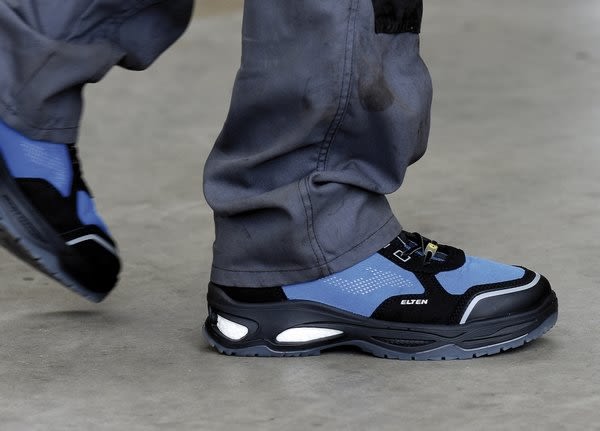 This year BASF is presenting its new polyurethane (PU) and thermoplastic polyurethane (TPU) portfolio for work and safety shoes at the A+A 2015, the international trade fair for occupational health and safety in Düsseldorf. From October 27 to 30, visitors to Hall 5, Stand K32 can see just how BASF‘s PU/TPU solutions offer greater comfort in safety shoes.
This year BASF is presenting its new polyurethane (PU) and thermoplastic polyurethane (TPU) portfolio for work and safety shoes at the A+A 2015, the international trade fair for occupational health and safety in Düsseldorf. From October 27 to 30, visitors to Hall 5, Stand K32 can see just how BASF‘s PU/TPU solutions offer greater comfort in safety shoes.Infinergy - as elastic as rubber but lighter
The world's first expanded thermoplastic polyurethane (E-TPU) is now being used for the first time in safety shoes. The closed-cell, elastic particle foam features low density, high elasticity, high abrasion resistance, high tensile strength and good long-term durability over a wide temperature range (down to minus 20°C) along with good chemical resistance. The outstanding property of Infinergy however, is its high resilience. Testing of the rebound elasticity in accordance with ISO 8307 (ball rebound test) and DIN 53512 (with defined pendulum hammer) demonstrates that Infinergy achieves a rebound height of more than 55%, putting it well ahead of comparable foams such as expanded polypropylene (EPP) at 30%, ethylene vinyl acetate (EVA) at 37% and expanded polyethylene (EPE) at 50%. Infinergy does not lose its high resilience even with continuous use, making it the ideal material for midsoles in safety shoes.The material is first used in the "Wellmaxx" range of safety shoes produced by the well-known innovative manufacturer ELTEN. "No midsole has so far produced greater energy return. In practice, the new cushioning technology makes life easier for all members of staff whose job involves a lot of running – a major factor in some sectors because it means a significant improvement in preventing fatigue and joint problems“, confirms Stefan Tintrup, orthopedic shoemaker and leading expert in shoe technology at the North Rhine safety shoe manufacturer Elten. People taking part in the wear test were very enthusiastic about the unique suspension and absorption properties of the shoes.

Elastopan Light Safe - lightweight and antistatic
In Elastopan Light Safe, BASF offers another low-density system. This is a water-blown polyurethane and is extremely antistatic with low density. Midsoles made of this new material are up to 40% lighter than standard PU systems for midsoles in safety shoes and therefore provide greater comfort.It can be used in combination with TPU or rubber outer soles to produce a dual-density sole that meets ISO standard EN20344:2011. The material does not require any special production technology; it can be processed with standard footwear casting and injection machines in order to produce soles and shoes.



